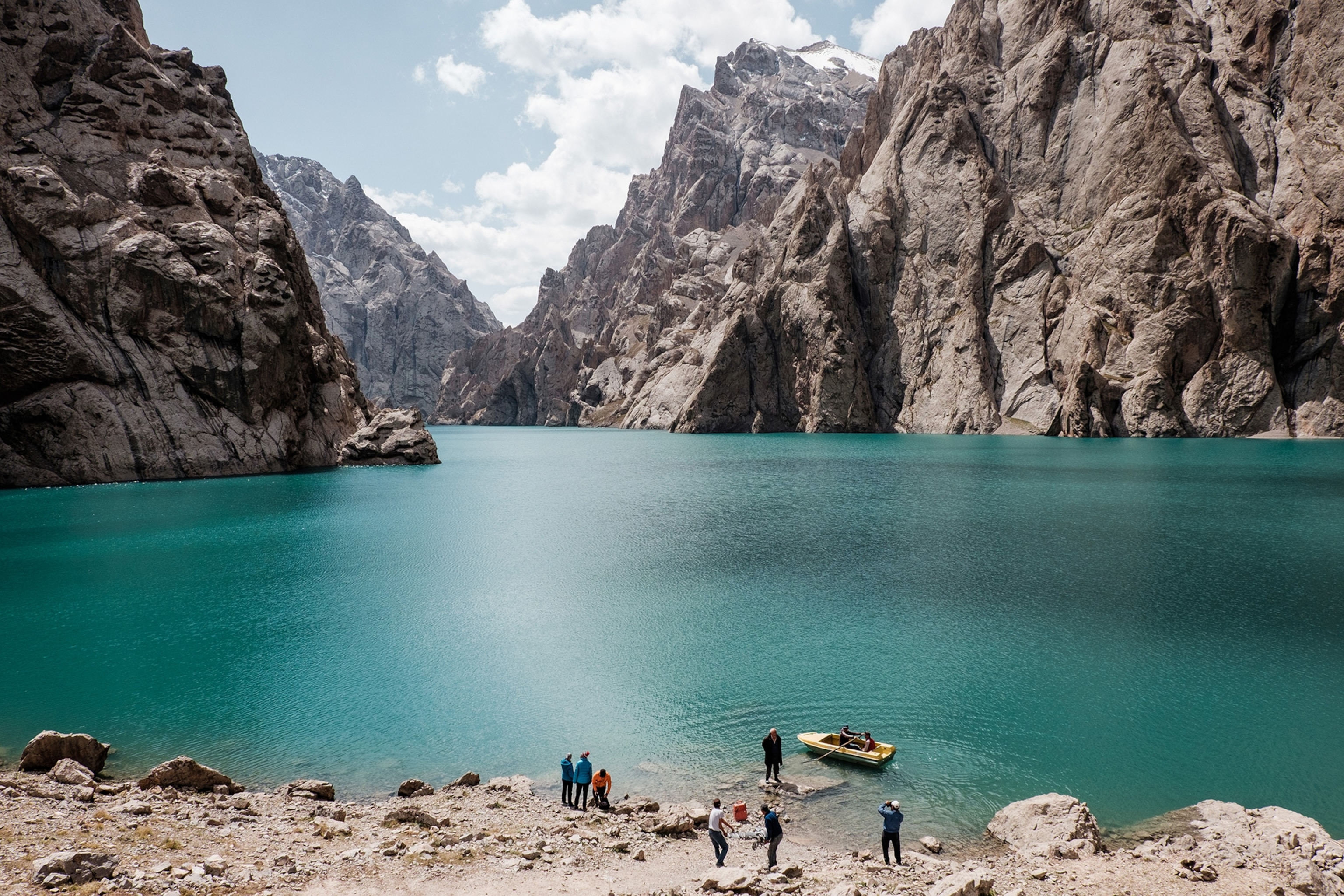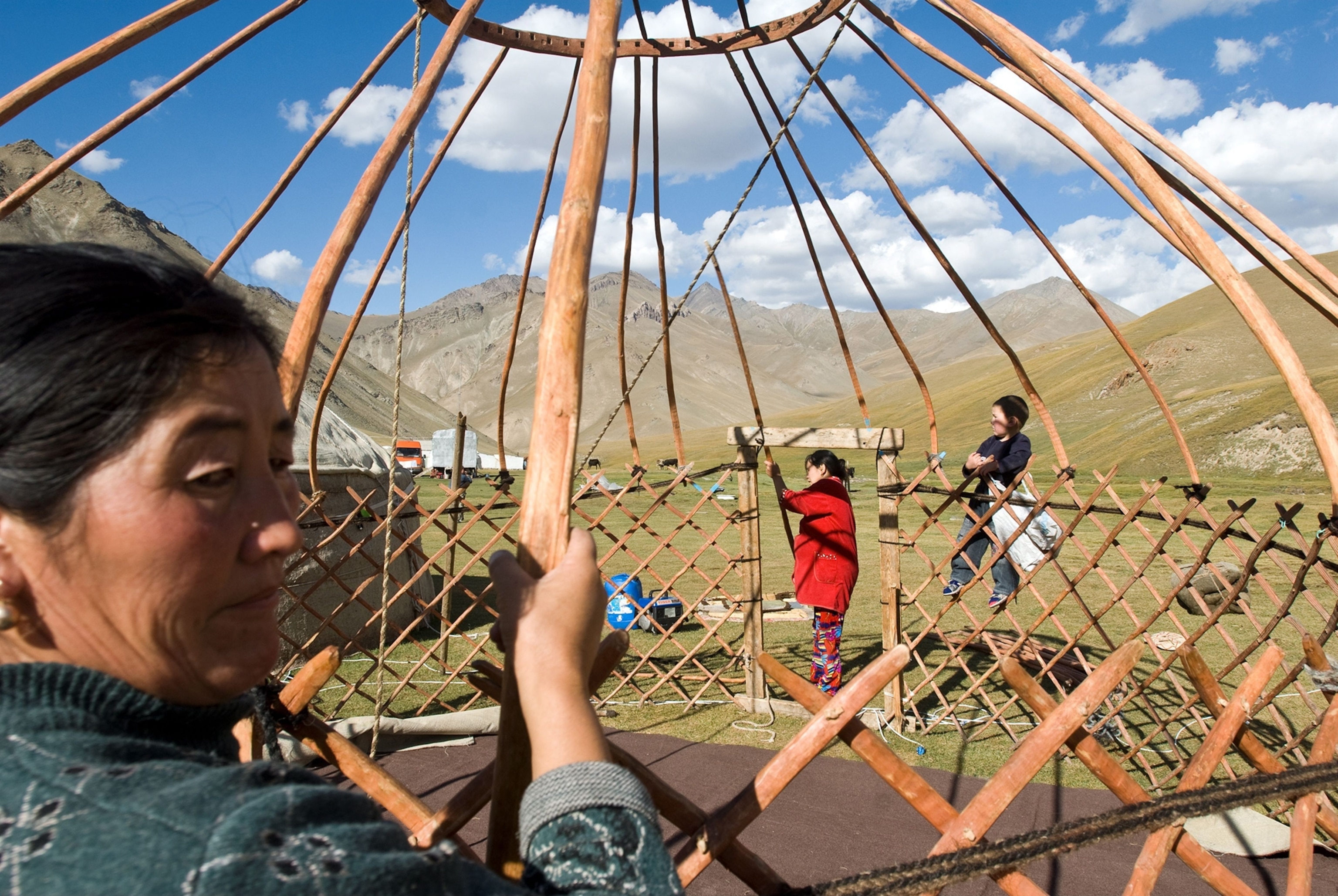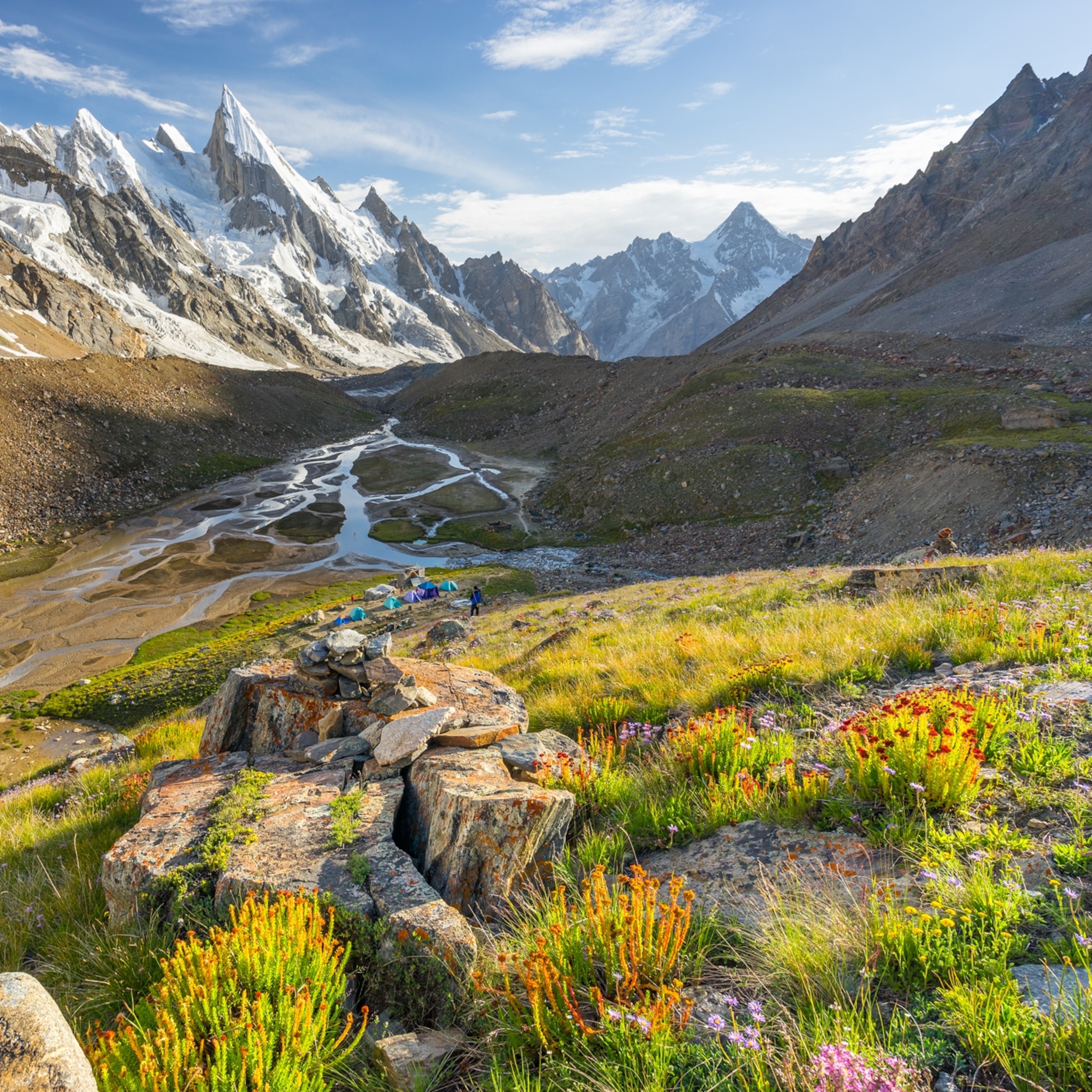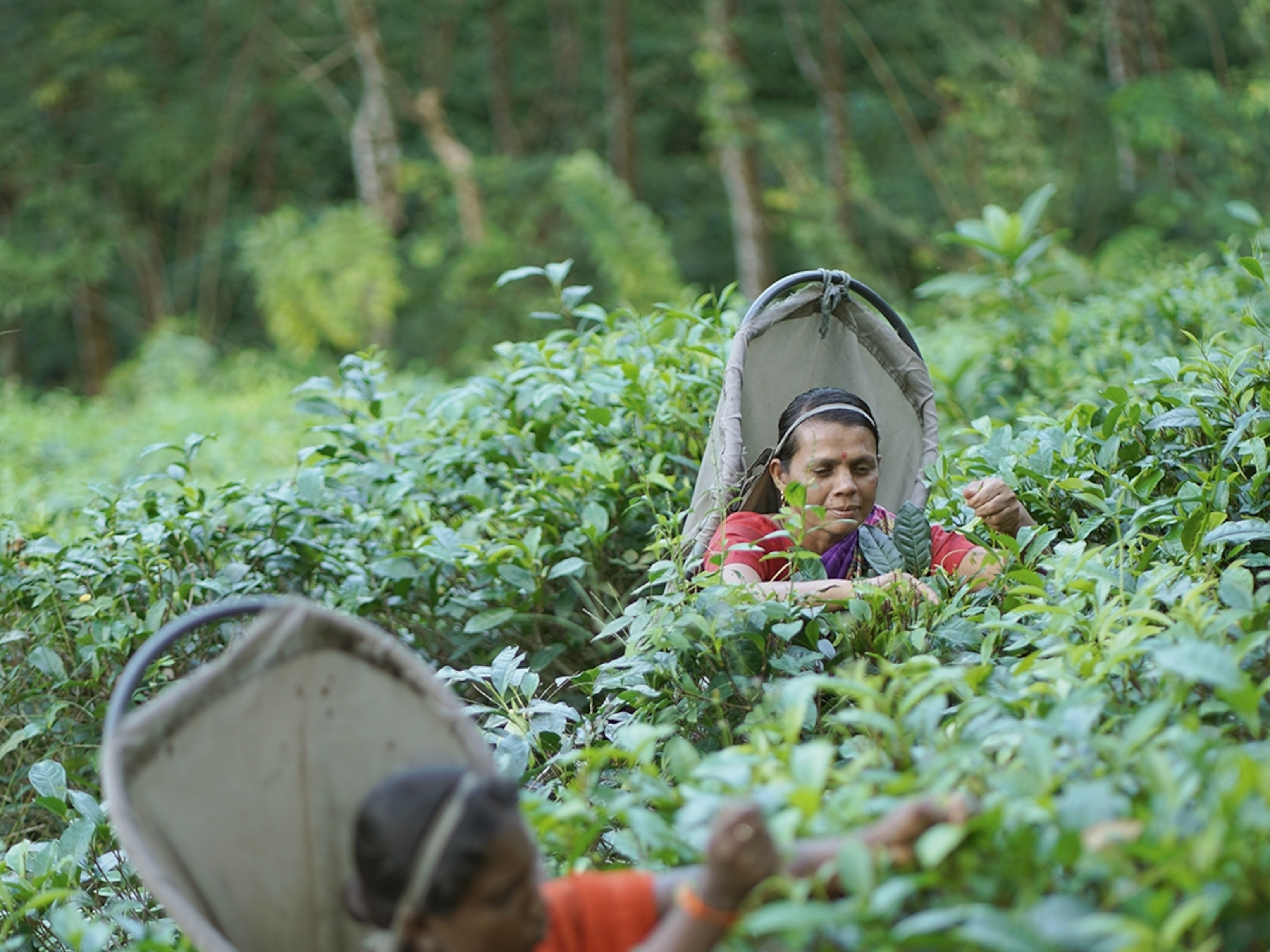
This is the longest hiking trail in Central Asia—here’s what to know before you try it
By summer's end, more than 600 miles will be added to the Kyrgyz Nomad Trail, granting hikers access to lesser-known parts of the country.
Adventurous hikers now have access to see a different side of Kyrgyzstan. The Kyrgyz Nomad Trail (KNT) is a 1,243-mile (2,000-kilometer) long-distance hiking trail in northern and eastern Kyrgyzstan, which make it the longest trail network in Central Asia. Launched in June 2024, the KNT—a network of 18 sections—runs west to east passing through states (oblasts) such as Jalal-Abad, Naryn, and Issyk-Kul.
Along the trail, hikers also experience the beauty of Kyrgyzstan firsthand with natural landmarks such as Ala-Köl, a lake located in the Terskey Alatoo mountain range in the Issyk-Kul region, and the Engilchek Glacier, the sixth longest non-polar glacier in the world.
Tourists and locals regularly visit the region’s popular destinations like the alpine lake Kel-Suu and Tash Rabat, a well-preserved, 15th-century Silk Road-era caravanserai or roadside inn where travelers and merchants crossing the mountains would stay overnight.

Yuval Yellin, one of the world explorers responsible for creating the Kyrgyz Nomad Trail, believes the trail plays an important role in luring hikers and tourists away from the country’s most popular routes and drawing them to lesser-known areas.
“[The Kyrgyz Nomad Trail] allows visitors to reach a much wider range of locations and communities around Kyrgyzstan and alleviate some of the pressure from the few and very popular places being visited today,” he says.
(Related: The big trip: how to plan the ultimate Silk Road adventure through Central Asia.)
Expanding the Kyrgyz Nomad Trail
By the end of summer 2025, the Kyrgyz Nomad Trail will expand by 621 miles (1,000 km). Nine new trail sections will branch off near the existing route at the Arpa Valley, a remote area of Naryn oblast, which is close to the Chinese border.
The newly developed sections of Kyrgyz Nomad Trail pass through Batken and Osh via the Tien Shen and Pamir Mountain ranges. Along the trail, the mountain villages and residents, including shepherd families who live in the mountains during the warmest months of the year, feel the trail’s impact. More tourists will give these communities a boost in business and their economies, which could manifest as job opportunities for locals to work as guides and porters.


Marc Foggin, director at Plateau Perspectives, says his organization’s goal core focus is to ensure the Kyrgyz Nomad Trail creates positive change in Kyrgyz mountain communities. “Beyond all the extraordinary landscapes and the natural and cultural heritage that a long-distance trail such as KNT can open up for travelers; it can, and should, also serve the interests of the local mountain communities. And this occurs both by linking and connecting different regions and communities around the country, enabling mutual learning and support,” he says.
(Related: 8 wild and beautiful places in Kyrgyzstan.)
Navigating hikers' safety on the trail
Despite intermittent conflicts with bordering countries, like Tajikistan in the summer of 2021, the Kyrgyz Nomad Trail and its network of trails have been created to keep hikers safe. “The KNT is very carefully routed, to stay in areas that are far from the zones of conflict and [to keep tourists] as safe as possible. Of course, we follow the progress of this conflict closely and are ready to change or close routes if needed.”
In March 2025, Kyrgyzstan’s President Sadyr Japarov and Tajikistan’s President Emomali Rahmon signed a deal to formally delineate their national borders, ending an ongoing dispute since the dissolution of the Soviet Union. Now, there’s the possibility of tourists returning to Batken, including to sections of the trail near the Tajik border.
Yellin encourages hikers to visit. “This country is marvelous full of magic, unbelievable landscapes and unbelievable people,” he says. “Hiking here is also a real and serious challenge. Be respectful, hike responsibly, think sustainable, and create positive impact.”
(Related: How I got the shot: Karolina Wiercigroch on capturing nomadic life in Kyrgyzstan.)
How to plan your trek on the Kyrgyz Nomad Trail
What you should know: Adventurous travelers should decide how they would like to tackle this epic network of trails, which will determine how many days or weeks are necessary to complete their ideal trek. Currently, no operators arrange tours of the full Kyrgyz Nomad Trail, but Kyrgyzstan-based companies can arrange customized hiking adventures, including these KNT partners, such as Nomad’s Land, Ak-Sai Travel, and Community-Based Tourism Kyrgyzstan.
Getting there: Most visitors enter Kyrgyzstan at Manas International Airport in Bishkek, which has regular direct flights to China, Kuwait, Korea, Turkey, the United Arab Emirates, and numerous Russian and Central Asian hubs. Travelers from Europe and North America may not have the option of a direct flight, so expect to air travel to include one or more connection flights.
Within the country, hikers will need to hire private transportation from Bishkek or Talas to reach the Chatkal Valley trailhead and start the hike.
When to go: The best time to hike the Kyrgyz Nomad Trails is June through September because this period offers the best the weather conditions for hiking, warm temperatures, and minimal rainfall. The high passes and mountain lakes will likely be covered in snow until late June or early July.

Visas and Permits
Tourists from the European Union, United Kingdom, United States, and Canada can enter the Kyrgyz Republic visa-free for up to sixty days. Information by country and details on how to apply for an electronic visa are available on the official Kyrgyzstan e-visa website.
A border permit is required from the State Border Guard Service of the Kyrgyz Republic for travelers who want to visit areas of Kyrgyzstan, bordering Tajikistan, China, and parts of Kazakhstan. While it is possible to apply for this independently, the process is onerous and time-consuming. Any reputable travel agency in Kyrgyzstan can apply on your behalf, typically for a fee of U.S. $30-50.
(Related: 5 Underrated Destinations in Central Asia.)






